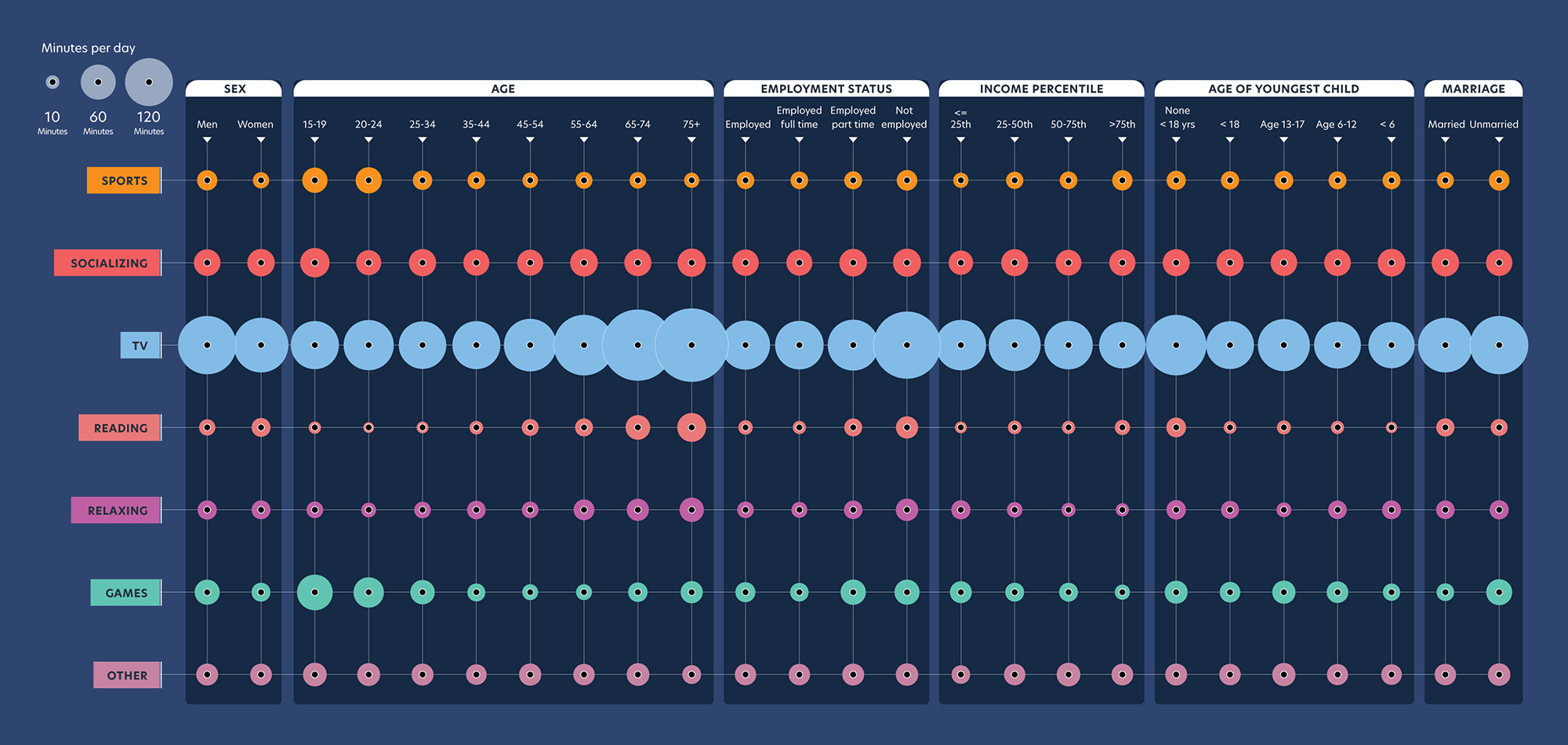THE WORD LEISURE—time that belongs to you, free from work or other duties—dates to 14th-century Europe. But for much of its existence, the term was an abstract concept to all but the wealthy. That began to change in the United States in the late 1800s as laborers pushed for a 40-hour week. At long last, the masses could unwind at parks, theaters, and beaches.
Today, we spend our spare moments a little differently, as the Bureau of Labor Statistics’ annual American Time Use Survey reveals. While sports and socialization remain important, modern escapes are increasingly digital and defined by television and video games. Yet who gets to decompress, and how, still varies widely. Map the data and you’ll find that sex, income, and family life determine how we spend our free time.
Screen time

Kids get a bad rap for watching too much TV. But folks 65 and up are getting the most screen time: Older Americans take in more than four hours daily. It’s a great source of entertainment, yet it’s not universally good for you; excessive tube time encourages people to stay sedentary, which doesn’t do anyone’s heart, muscles, or bone density any favors.
Kidding aside

Children dictate how their caretakers spend their days. People with little ones under six, who require constant attention and active playtime, got just 18.6 minutes of relaxation a day in 2019. But it’s the parents of teens who get the least: They spend 11 minutes a day chilling out, and the rest of the time worrying what trouble their young adults are getting into.
Pushy notifications

Workout break

If you want to get swole, consider getting rich first. High earners often have less downtime, but those in the top 25 percent spend an average of 21 minutes a day on sports and exercise—almost twice that of folks in the bottom 25 percent. But it’s not all good news. Although more money is correlated with more frequent trips to the gym, it’s also linked to more drinking.
Home life

Women typically enjoy less free time than men. It’s a sizable deficit too: 40.2 minutes daily in 2019. That’s because many work outside the home and also bear the most responsibility for child care and household chores. While they’re busy crossing things off their to-do lists, dudes are whiling away their extra time gaming or watching TV.
This story originally ran in the Spring 2021 Calm issue of PopSci. Read more PopSci+ stories.

